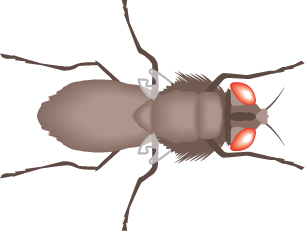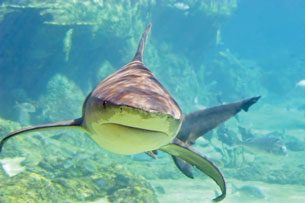Module 4 Intro
1. Module 4 Intro
1.4. Page 2
Module 4—Mechanisms of Population Change
 Explore
Explore
 Read
Read
variation: visible or invisible differences between individuals
adaptation: a beneficial variation that helps an organism survive
mutation: a change in the genetic material of an organism (DNA)
Variation is all around you—it’s the differences between all living things. No two puppies or humans look and behave exactly the same. Some variations may give an organism a survival advantage, some may cause a disadvantage, and some will not make a difference in the organism’s survival.
A variation that gives a survival advantage to an individual is called an adaptation. Adaptations allow an individual to survive and reproduce. When an organism reproduces, it can pass on adaptations to its offspring, giving them the same survival advantages. These adaptations continue to be passed on from parent to offspring over many generations as long as the adaptation gives the organism a survival advantage.
If the environment changes, an adaptation that once gave a survival advantage may now give a survival disadvantage to an organism. In the new environment, the organism will not survive to pass on its genetic information.
Variations can be created during sexual reproduction (when genetic material from both parents is mixed up) or through mutations.

Read pages 114 to 117 in the textbook and page 118 to “Natural Selection.” You will become familiar with variations, adaptations, and mutations.
 Self-Check
Self-Check

© Ian Scott/shutterstock
SC 1. Sharks have an excellent sense of smell. Is smell an adaptation?
SC 2. Give an example of how sexual reproduction leads to variations among individuals in a population.
SC 3. What is the difference between a mutation in a somatic cell as compared to a mutation in a reproductive cell?
SC 4. Give an example of a mutation that provides a selective advantage.
SC 5. Give an example of a mutation that provides a selective disadvantage.
 Self-Check Answers
Self-Check Answers
SC 1. Yes. Smell helps sharks survive by being able to find food.
SC 2. Kittens with the same parents can have many different looks based on the inherited combinations of genes that can occur during sexual reproduction.
SC 3. A mutation in a somatic cell cannot be passed on to the next generation. A mutation in a reproductive cell may be passed on to succeeding generations.
SC 4. An example of a selective advantage is a mutation in houseflies. This mutation makes the insects resistant to the insecticide called DDT. This situation is only advantageous if DDT is being used because the flies with the mutation will have a better chance of survival and reproduction (survival of the fittest).
SC 5. An example of a selective disadvantage can also be the mutation in houseflies that makes them resistant to DDT. This mutation reduces the growth rate of these flies. If DDT is not present, those flies will be less likely to survive and reproduce because of their size (survival of the fittest).
 Discuss
Discuss
How does sexual reproduction lead to variation among individuals in a population? Create a thorough response to this question. Post your response in the discussion area, and view the other posted responses. Is your explanation easy to understand when compared to classmate responses? Will you make any changes to your explanation after reading other student explanations? Make any changes you like and repost your final response to the question. Your teacher may choose to make this posting an assignment question.